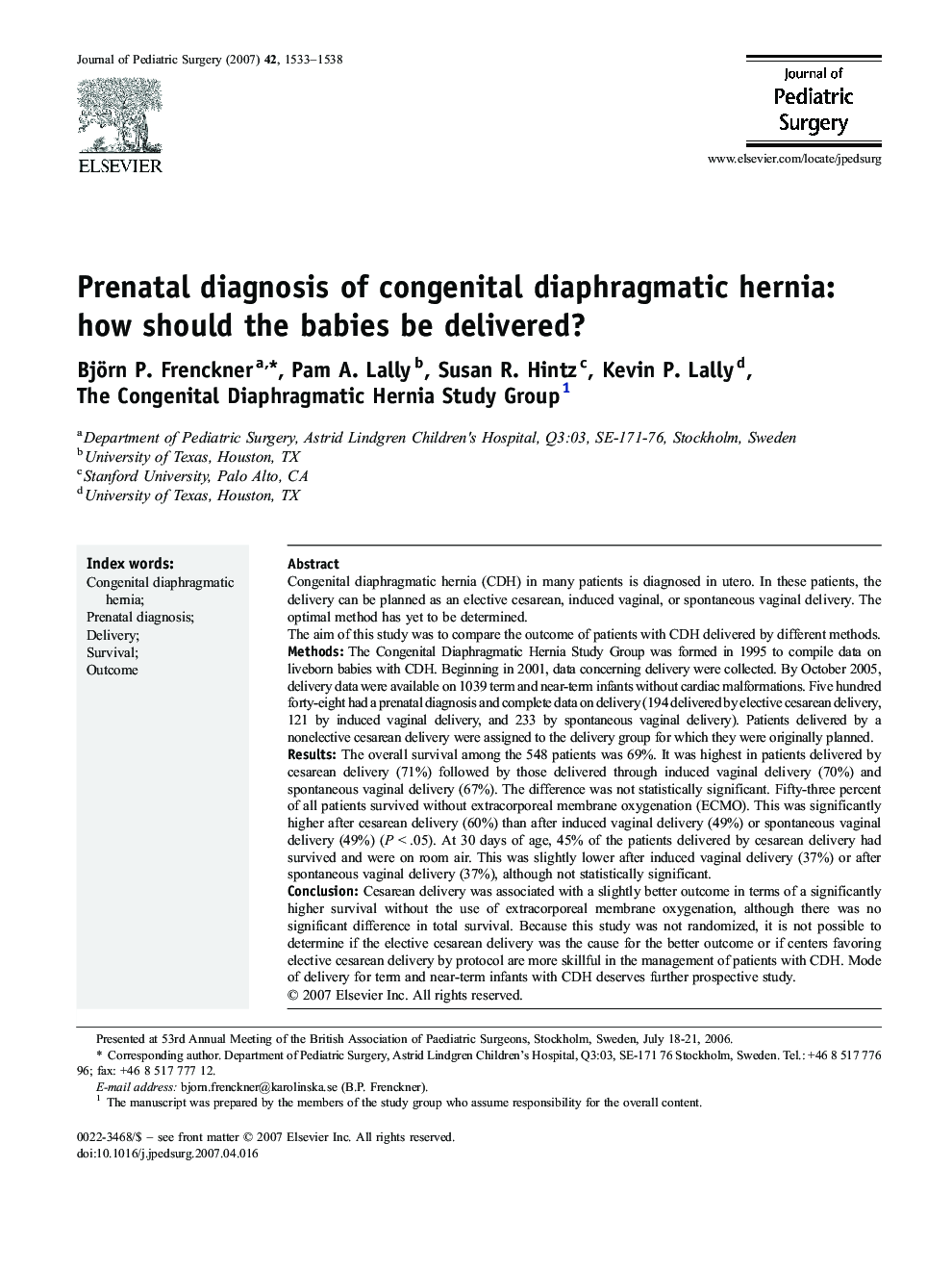| کد مقاله | کد نشریه | سال انتشار | مقاله انگلیسی | نسخه تمام متن |
|---|---|---|---|---|
| 4159658 | 1273830 | 2007 | 6 صفحه PDF | دانلود رایگان |

Congenital diaphragmatic hernia (CDH) in many patients is diagnosed in utero. In these patients, the delivery can be planned as an elective cesarean, induced vaginal, or spontaneous vaginal delivery. The optimal method has yet to be determined.The aim of this study was to compare the outcome of patients with CDH delivered by different methods.MethodsThe Congenital Diaphragmatic Hernia Study Group was formed in 1995 to compile data on liveborn babies with CDH. Beginning in 2001, data concerning delivery were collected. By October 2005, delivery data were available on 1039 term and near-term infants without cardiac malformations. Five hundred forty-eight had a prenatal diagnosis and complete data on delivery (194 delivered by elective cesarean delivery, 121 by induced vaginal delivery, and 233 by spontaneous vaginal delivery). Patients delivered by a nonelective cesarean delivery were assigned to the delivery group for which they were originally planned.ResultsThe overall survival among the 548 patients was 69%. It was highest in patients delivered by cesarean delivery (71%) followed by those delivered through induced vaginal delivery (70%) and spontaneous vaginal delivery (67%). The difference was not statistically significant.Fifty-three percent of all patients survived without extracorporeal membrane oxygenation (ECMO). This was significantly higher after cesarean delivery (60%) than after induced vaginal delivery (49%) or spontaneous vaginal delivery (49%) (P < .05).At 30 days of age, 45% of the patients delivered by cesarean delivery had survived and were on room air. This was slightly lower after induced vaginal delivery (37%) or after spontaneous vaginal delivery (37%), although not statistically significant.ConclusionCesarean delivery was associated with a slightly better outcome in terms of a significantly higher survival without the use of extracorporeal membrane oxygenation, although there was no significant difference in total survival. Because this study was not randomized, it is not possible to determine if the elective cesarean delivery was the cause for the better outcome or if centers favoring elective cesarean delivery by protocol are more skillful in the management of patients with CDH. Mode of delivery for term and near-term infants with CDH deserves further prospective study.
Journal: Journal of Pediatric Surgery - Volume 42, Issue 9, September 2007, Pages 1533–1538